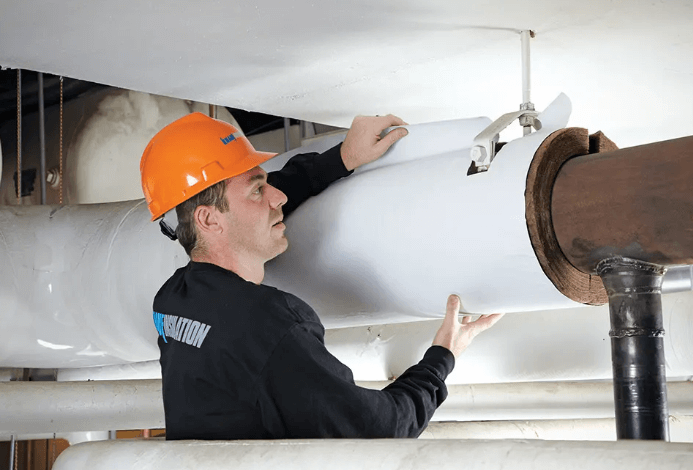The Essential Guide to Pipe Insulation: Types, Benefits, and Installation Techniques

Pipes are a foundational element in many infrastructural setups, from homes to industrial complexes. Yet, without proper insulation, these conduits of water, gas, and other essential elements can quickly become inefficient or even dangerous. Pipe insulation ensures that pipes operate at their peak performance, minimizing energy loss and preventing potential damage. In this guide, we’ll delve into the world of pipe insulation, discussing its types, benefits, and installation techniques.
Types of Pipe Insulation
Fiberglass Insulation: One of the most commonly used insulating materials, fiberglass is made up of fine fibers of glass. It is fire-resistant, affordable, and can be easily fitted around pipes.
Foam Insulation: Foam insulation, including polyethylene and elastomeric foam, offers flexibility and is often used for pipes that require frequent bending or are located in tight spaces.
Rockwool Insulation: Made from minerals and stones that are spun into a fibrous material, rockwool offers excellent fire resistance and acoustic insulation properties.
Cellulose Insulation: Derived from recycled paper products, this eco-friendly option is treated with chemicals to enhance fire resistance and reduce pests and mold.
Calcium Silicate: Predominantly used in high-temperature industrial settings, this rigid insulation material offers solid heat resistance.
Benefits of Pipe Insulation
Energy Efficiency: Insulating pipes reduces heat loss, meaning that heating systems, for instance, don’t have to work as hard. This can lead to significant energy savings over time.
Prevention of Frozen Pipes: Proper insulation protects pipes from freezing in cold temperatures, preventing potential bursting and subsequent damage.
Condensation Control: In many applications, especially in industries, it’s essential to prevent condensation on pipes. Insulation assists in maintaining the temperature, preventing moisture buildup.
Noise Reduction: Certain insulating materials can help dampen the noise caused by pipes, especially in residential settings.
Protection and Longevity: Insulation acts as a protective barrier, shielding pipes from physical damage and extending their lifespan.
Installation Techniques
Measure and Cut: Always start by measuring the length and diameter of the pipes to determine the amount of insulation needed. Using a sharp utility knife, cut the insulation material according to the measurements.
Secure Insulation: Depending on the type of insulation, you might use adhesive, tape, or clamps. For instance, foam sleeves often have self-sealing edges, while fiberglass might require tape.
Seal the Joints: Ensure that all joints and seams are tightly sealed. This is crucial to prevent energy loss and moisture intrusion.
Install Protective Covers: In outdoor settings or areas with high foot traffic, it might be beneficial to install a protective cover over the insulation for added protection.
Regular Maintenance: Periodically inspect the insulation for signs of wear, damage, or moisture. Replace sections as necessary to maintain efficiency.
Conclusion
Whether you’re a homeowner aiming to reduce energy bills or an industrial professional striving for optimal system efficiency, understanding pipe insulation is crucial. By selecting the right type of insulation for your needs and ensuring its proper installation, you can protect your infrastructure, save money, and promote safety. Remember always to prioritize quality and, if unsure, seek advice from insulation professionals for optimal results.
